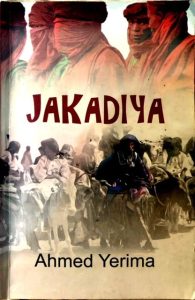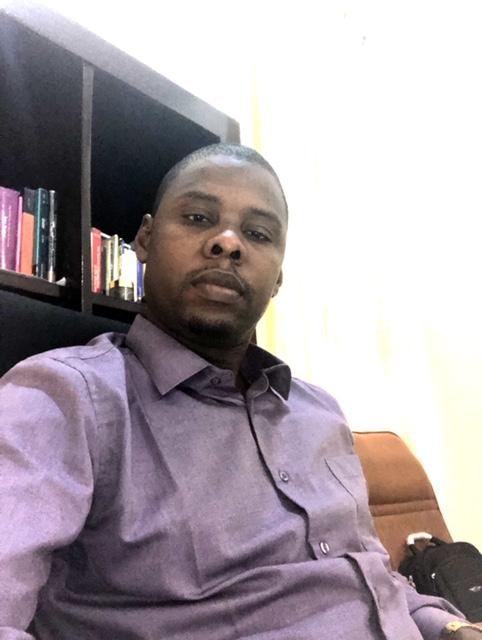First published in 2017 By Kraft under its Kraftgriots series, Ahmed Yerima’s Jakadiya is set in a colonial Hausa State that was still (indirectly) under the control of the Sokoto Caliphate. Prof. Ahmed Parker Yerima (b. 1957) is a Nigerian dramatist, director, administrator, and university lecturer, with over 30 plays in his oeuvre, some of which have won awards. His plays Yemoja and Hard Ground won the Nigeria Prize for Literature in 2006. He was also the winner of ANA/NDDC J.P. Clark Drama Prize in 2016. Jakadiya paints the ruptures that undermine the age-long succession system in Hausaland. The play offers an imaginative, albeit historical, account of royal lineage and how cultural/institutional order is at times disrupted through intrigue and power tussle. The story was inspired by a photo of an emir greeting his mother with an elderly woman in-between and in attendance (Yerima, 2017). The picture served as heart of the story and a springboard for nudging questions in the playwright’s mind.


Jakadiya opens with the death of the late Emir, Sarki Abdulgafar, and preparations for the coronation of the new Emir, Rufai, amidst rumours of an impending coup plan by the Waziri, Chiroma and other cohorts like Husein, Ibrahim, Ahmed and Abbas, who doubt the birth right of Rufai. Bilkisu (Jakadiya and the leading character in the play) utilises the disruption to press for her elevation to Magajiya (head of all the women in the kingdom) as compensation for her years of pain, dedication, humiliation, and contributions in the sustenance of the status quo. As the plot for the uprising thickens, knots are untied regarding the true birth of Rufai. Bilkisu’s disdain for the father and son (the late Emirs she served as slave and consort) led her to defile their graves, until it was finally revealed through the help of Ahmed Dattijo (the royal shadow who sees and hears but says nothing) that Rufai was in fact Bilkisu’s true but illegitimate son. The paternity ritual that should ideally kill Rufai failed because Bilkisu managed to tie and gag Uwar Soro (Rufai’s assumed mother) and perform the ritual instead. The chief of guards, Gambu Gada, killed her shortly after the paternity test ritual, leaving Rufai lost as to his true identity. The brutal murder of Ahmed Dattijo also led to the loss of the names behind the conspiracy to usurp the throne for Prince Ladan.
This page-turnerof a play paints facets of female abuse in royal houses, rife with instances of the travailand abuse of Bilkisu and Atine. Sexually abused, belittled, and deceived, Bilkisu embodies the experience of women today. Importantly, she typifies the trauma of the girl child abused at a tender age. Also pertinent and in relation to that is the refusal to educate women at that time. Not only the girls, the play depicts a society still in conflict with western values and struggling with the question of whether to educate its own. The fear of a pregnant future pushes the noble to send their wards to western schools to reap post-colonial benefits, as revealed in Kassim’s plan to educate his son so as to sustain the power dynamics. In preparation for the white man’s final departure,Kassim vows that his last son Shehu “will go to their schools. Who knows, he might end up living in the D.O.’s big white house someday. It is good to have one of them in the family.”
As suffused with order as this book is,bits of disruption stand out in every scene. The bits form as the story unfolds to disrupt succession order, allowing Bilkisu to tamper with the ritual that would have marred the ascension of the new Emir. In the end, then, nothing is sacrosanct. The success of the paternity ritualimplies an acceptance of impure (in terms of pure blood) successions in royal homes. Rufai’s ascension is akin to his purification and eventual cleansing of his mother in death since it is only in that realm that she can overcome shackles of royal slavery. As a conduit for the survival of the lineage, Bilkisu is a means to an end,the disposable chess piece. Although the tables turned to show the loose end of succession order and how it had outlived its usefulness, the veiled abuse is glaring enough to call for redress. The ruptures in the book are many, the stark one beingmanoeuvres to outwit fate by defying lineage based on blood.
It is easy to see why this play, which paints royal manoeuvres and hidden secrets, is not well received. It opens up possibilities of change within a system as sacred as succession and repositions the order of things. At least, its second layer speaks this much. But then, it is flawed with traces of cultural and religious delusions, as well as poor Hausa orthography (a rana litini, kwakwara, rankadede, wayo Allah na, tapde, Alihamdulila, yakuri, babaringa, alkeba, walahi, rikisi, lahilahilala and gogo) thatone wonders if the writer properly understands the language, religion and culture of the people being depicted. It adopts ordinary language even when the noble speaks (Aristotle in Poetics states that nobles should speak in verse). It is not literary almost to a fault. It is an example of the contemporary emphasis on content at the expense of craft. And yet I couldn’t put the book down because the story reveals and resonates in ways that even history cannot. The lucidpaintings on a canvas, remarkable characters, and made-up (notwithstanding real) settings keep me thinking for a very long time.Jakadiya offers an inside view of what goes on behind royal curtains.
Shamsuddeen Bellois a Senior Lecturer with the Department of English and French, Umaru Musa Yar’adua University, Katsina. Bello holds BA English (2006), MA Literature (2013) and PhD Drama (2016) degrees. He has published widely and attended conferences at home and abroad and is a member of associations such as ANA, Toastmasters International, ISOLA, ESAN, and WAACLALS, among others.


5 comments
Nice one from Dr Shamsu Bello. The review is like a preface or better still a perfect synopsis to the entire text. So simple and straightforward. However, looking at the definition of what a “book review” is one may conclude that Dr Bello has succeded in giving readers a good storyline cum plot of the play. An intelligent student may not bother to look for the hard copy before answering questions set from the text. Certain ingredients native to book reviews are missing.
Generally, it’s a nice piece of work that will stand the test of time for a long, long time to come.
Excellent review. Bold and balanced. I enjoyed reading it.
Thank you Dr Shamsudeen Bello.
Wow
Interesting
That’s incredible and marvelous write up.